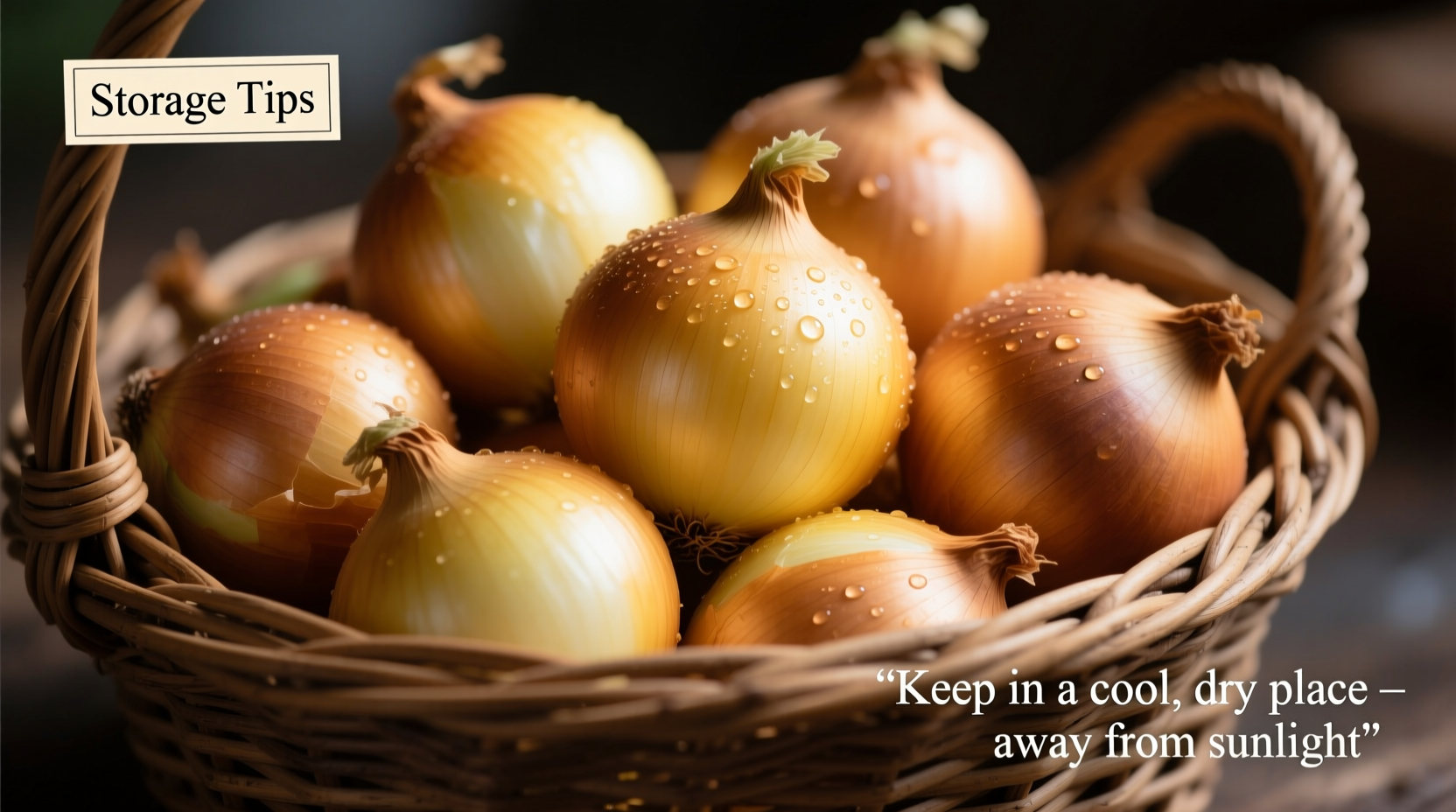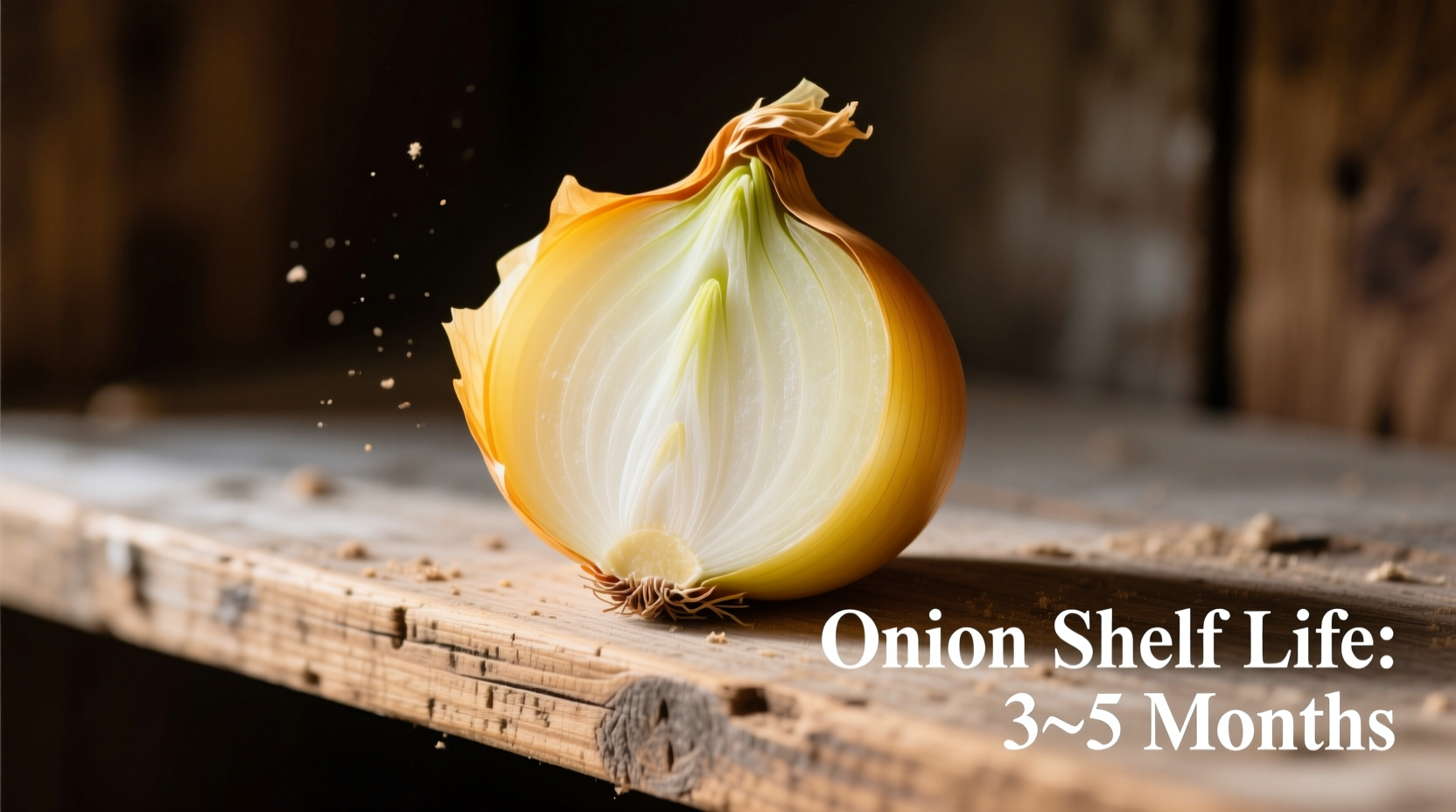Discover the precise shelf life expectations for every onion type and transform how you store this kitchen staple. Whether you're meal prepping for the week or salvaging that forgotten bag in your pantry, these evidence-based storage techniques ensure maximum freshness and flavor retention.
Understanding Onion Shelf Life Fundamentals
Onions aren't just pantry workhorses—they're living bulbs that continue metabolic activity after harvest. Their longevity depends on three critical factors: variety, storage environment, and physical condition. Unlike many vegetables, onions actually improve in flavor during initial storage as enzyme activity develops complex sugars.
The USDA Food Safety and Inspection Service confirms that proper storage conditions can extend onion viability by up to 50% compared to improper methods. Temperature fluctuations cause the most significant degradation, triggering sprouting and moisture loss that accelerate spoilage.
Optimal Storage Methods for Maximum Freshness
Forget the refrigerator for whole onions—cool, dark pantries outperform cold storage for uncut bulbs. The ideal conditions maintain 32-45°F (0-7°C) with 65-70% humidity and excellent air circulation. Mesh bags or woven baskets work better than plastic containers that trap moisture.
Refrigeration becomes necessary only after cutting. Store chopped onions in airtight containers with minimal headspace to prevent odor absorption. The FDA recommends using refrigerated cut onions within one week for optimal safety and quality.
| Onion Type | Pantry (Whole) | Refrigerator (Cut) | Freezer (Prepared) |
|---|---|---|---|
| Yellow Storage Onions | 2-3 months | 7-10 days | 6-8 months |
| Red Onions | 3-4 weeks | 7 days | 4-6 months |
| White Onions | 2-3 weeks | 5-7 days | 4-6 months |
| Sweet Onions (Vidalia) | 1-2 weeks | 5 days | 3-4 months |
This comparison reflects data from the UC Davis Postharvest Technology Center's 2023 storage trials. Notice how sweet varieties deteriorate faster due to higher water content—critical information when planning meal prep.
Recognizing Spoilage: Beyond Surface Mold
Don't rely solely on visible mold to determine onion safety. Internal spoilage often begins before external signs appear. Press gently on the bulb—fresh onions feel firm throughout. Soft spots, even without discoloration, indicate enzymatic breakdown.
Watch for these progressive spoilage indicators:
- Early stage: Slight softening at neck, faint sweet odor
- Middle stage: Visible dark spots, mushy areas, strong sour smell
- Advanced stage: Extensive mold, slimy texture, ammonia-like odor
The National Onion Association's spoilage timeline shows that once soft spots appear, complete spoilage typically occurs within 3-5 days at room temperature. Discard onions showing any advanced stage symptoms—salvaging portions risks cross-contamination.
Varietal-Specific Storage Considerations
Not all onions follow the same rules. Sweet varieties like Vidalias require special handling due to their 8-10% higher water content compared to storage onions. These delicate bulbs develop internal rot faster when exposed to humidity fluctuations.
Green onions present different challenges—they last only 3-5 days refrigerated in water. Store them upright in a glass with 1 inch of water, changing the water every other day. This hydroponic method maintains crispness significantly longer than standard vegetable drawer storage.
Never store onions near potatoes—their emitted ethylene gas accelerates sprouting. The University of Minnesota Extension confirms this interaction reduces onion shelf life by up to 40% when stored within 12 inches of potatoes.
Practical Usage Strategies for Home Cooks
Maximize your onion investment with these chef-tested techniques:
- Prevent premature sprouting: Store with apples to absorb excess moisture (apples emit ethylene which inhibits sprouting)
- Revive slightly soft onions: Soak in ice water for 30 minutes to restore crispness for salads
- Extend cut onion life: Place a piece of bread in the container to absorb excess moisture
- Freeze properly: Blanch chopped onions for 30 seconds before freezing to preserve texture
When preparing onions, work efficiently—exposure to air begins the degradation process immediately. Professional kitchens use the "cut-to-pan" principle: never let cut onions sit longer than necessary before cooking or refrigerating.

Special Circumstances and Exceptions
Humid climates require modified storage approaches. In regions with >70% humidity, refrigerate whole onions in the crisper drawer with ventilation. The USDA FoodKeeper app specifically recommends this adjustment for Gulf Coast and Southeastern US residents.
Cooked onions follow different rules—they maintain quality for 3-5 days refrigerated. For meal preppers, the safe storage window extends to 2-3 months when frozen in portion-sized containers. Always cool cooked onions within 2 hours before refrigerating to prevent bacterial growth.
Remember that sprouted onions aren't automatically unsafe. If the bulb remains firm and shows no mold, simply remove the sprout and use immediately. The sprout itself is edible though bitter—the real concern is texture degradation in the bulb.











 浙公网安备
33010002000092号
浙公网安备
33010002000092号 浙B2-20120091-4
浙B2-20120091-4